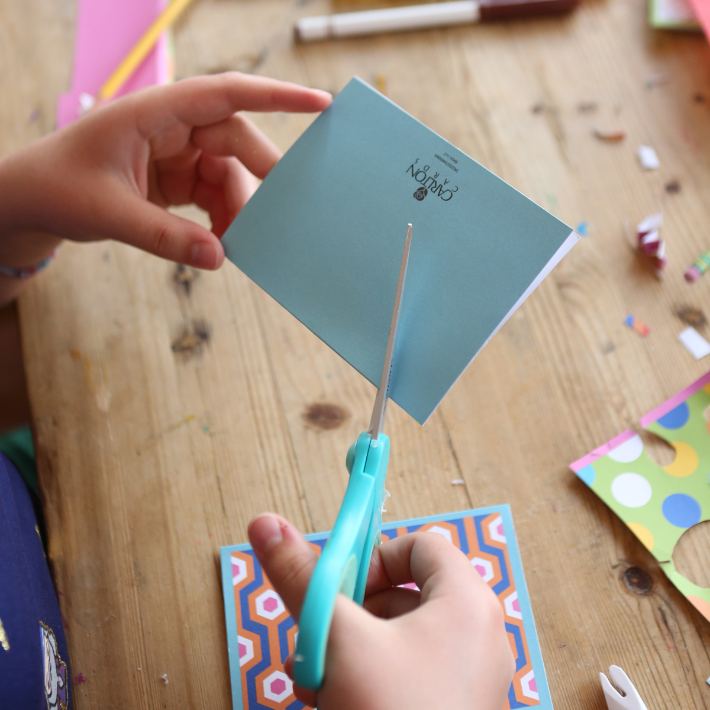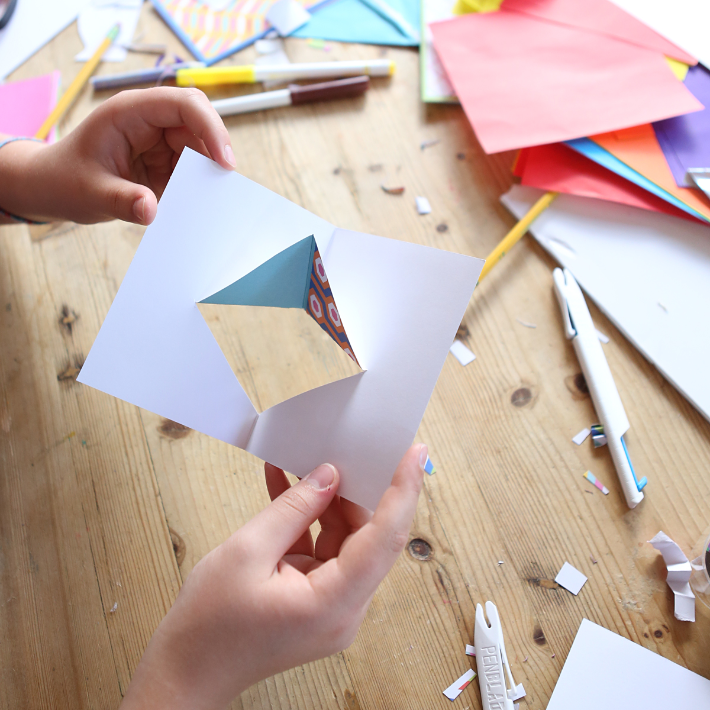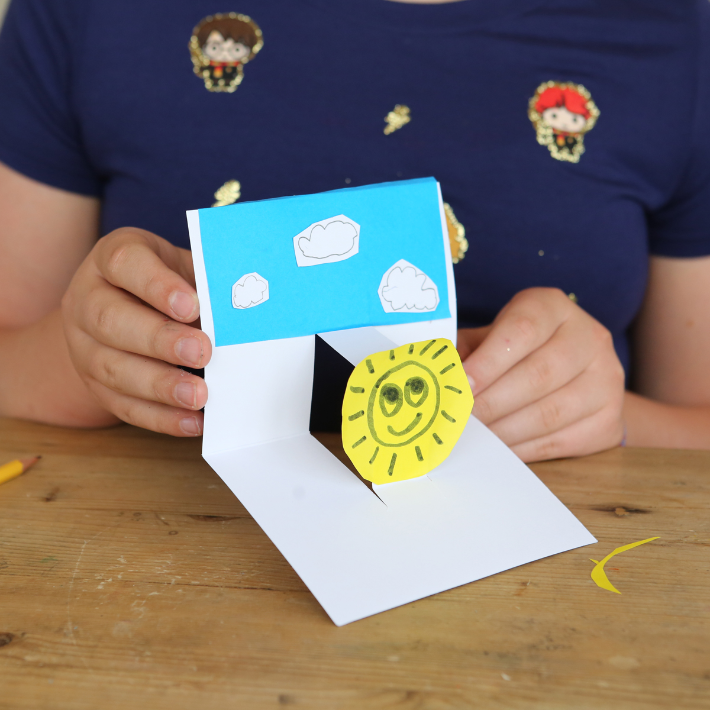Young authors, aspiring engineers, and kids who love art will all have fun with this creative project that lets them use paper and scissors to engineer pop-up designs from paper. Whether they want to make a special birthday card or tackle the challenge of designing a pop-up book, kids will love the 3-D results of this project.
What You’ll Need
- Notebook (optional)
- Card Stock or small greeting cards
- Markers
- Glue
- Tape
Safety Tips and Hints: Younger learners may initially need some help to make the cuts, but once they get the hang of it, it’s a great way to practice using scissors.
What to Do










